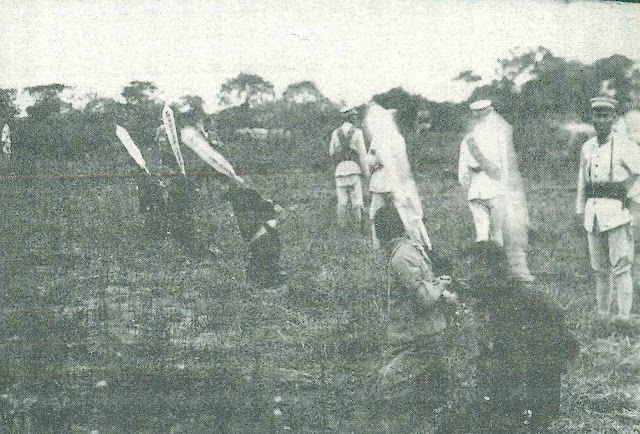In the mid-1920s, the British police of the Shanghai International Settlement carried out the death penalty by firing squad against Chinese militants in the Shanghai Public Concession. The bodies of Chinese armed rioters were left in a remote execution site.They suppressed radical Chinese forces such as Shanghai people's problematic behavior, arms smuggling, and extremism, and thoroughly suppressed the Asian race due to racial prejudice. They abused and massacred Chinese prisoners in iron cages, forcing them to wear shackles and beat them with bamboo sticks.
The Shanghai Ministry of Works Police (SMP), the British colonial police, cracked down on radical activists causing disturbances in the Shanghai public concession. The Shanghai Municipal Council, the Ministry of Works Bureau, controlled the police, but from 1854 it was organized into a large scale overseas other races with a small group of only overseas British and a mixture of foreigners hired from the Hong Kong police and army. The Japanese section was expanding in the Hong Kong area in the northern part of the Shanghai public concession. The Foreigners' Department was organized according to a racial pecking order with Europeans at the top, with thorough control of the lethargic and lazy Asian organizations. The foreign residents of the Shanghai public concession controlled the organization and activities of the Shanghai Engineering Department police. Chinese and Indian Sikhs employed by the Shanghai Engineering Police were enslaved. Foreign residents of the Shanghai Public Concession came under the jurisdiction of consuls from other countries. In the Shanghai patrol, the exchange behavior of Chinese and foreigners, Sikhs and Japanese at the gates became a provocation for disturbances.
The crime rate in Shanghai skyrocketed after 1913, and the Shanghai International Settlement police reached a critical level. In particular, the remnants of the Shanghai Revolution, The crime rate in Shanghai skyrocketed after 1913, the Shanghai International Settlement police reached a critical level. In particular, the remnants of the Shanghai Revolution, which began on July 12, 1913 to overthrow Yuan Shikai, but was suppressed on August 13, 1913, hid in Shanghai. 98 incidents of armed Kuomintang remnant soldiers attacking stores and houses occurred in Shanghai from 1914, and the number increased to 196 in 1916.
The British won the First Opium War (1839-1842) against the Qing Dynasty, and by the Treaty of Nanking in 1842, the British were able to cede Hong Kong Island in the Qing Dynasty of China and retain the opening of five treaty ports, Guangzhou, Fuzhou, Xiamen, Ningbo, and Shanghai, which could be controlled by foreigners. Among them, the Shanghai Public Concession was the largest bridgehead of the Qing Dynasty. The Shanghai International Settlement police controlled law and order with extraterritoriality; in 1863, the British and American concessions were formally joined to form the Shanghai Public Concession. Japan had the largest number of Japanese foreign residents in Shanghai from 1915 during World War I. With the Shanghai Incident in the 1930s, the Japanese rapidly made up about 80 percent of the extraterritorial foreigners in Shanghai. With the outbreak of the Pacific War on December 8, 1941, Japanese troops raided and occupied Shanghai, and the Shanghai Public Concession ceased to exist. After 1949, when the People's Republic of China was established after the Pacific War, the city government, the Ministry of Works, became under the control of the mayor of Shanghai, a member of the Chinese Communist Party.
(Hong Kong: reverted from the United Kingdom to the People's Republic of China on July 1, 1997; Hong Kong National Security Maintenance Law came into effect on July 1, 2020.)


